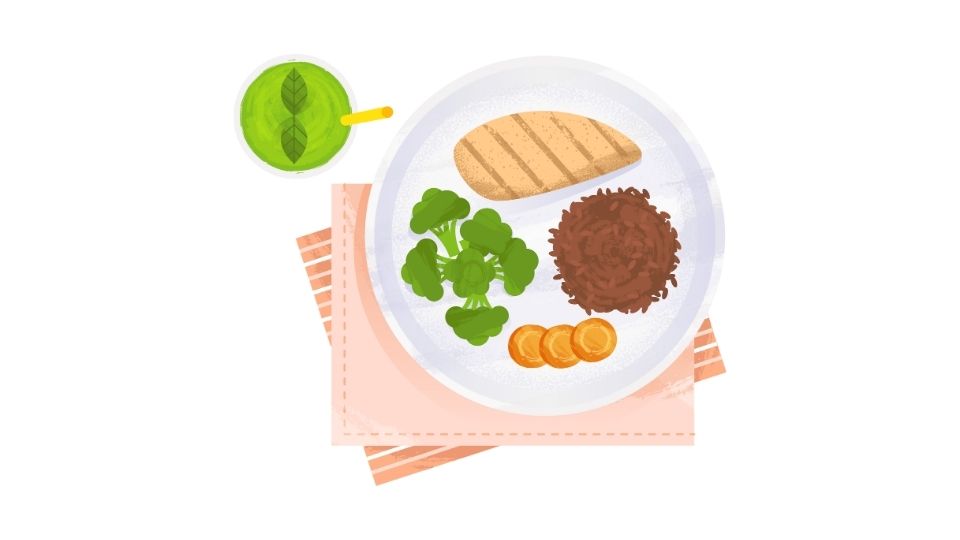Ever tried logging your meals?
If you’re like most people, you’ve probably downloaded some calorie tracking app, used it for three days straight, and then abandoned it forever.
I get it. Traditional food tracking is tedious. Searching databases, estimating portions, scanning barcodes… it’s enough to make anyone quit.
But what if you could just talk to your phone and have your meals logged automatically?
That’s the promise of voice-input meal tracking apps – and they’re changing the game in 2025.

The Rise of Voice-Input Meal Tracking Apps
Remember when we used to manually type everything into our phones? Feels ancient, right?
Voice technology has transformed how we interact with our devices, and nutrition apps are finally catching up. These new apps let you record what you eat simply by speaking into your phone.
No more scrolling through endless food databases or trying to scan barcodes while the cashier gives you the death stare.
Just say “I had two eggs, a slice of toast with avocado, and black coffee” and boom – your breakfast is logged.
How Voice-Input Meal Tracking Actually Works

These apps use artificial intelligence to understand your natural speech patterns and convert them into nutritional data. The tech behind this is pretty impressive.
When you speak into your phone saying something like “grilled chicken breast with a cup of brown rice and steamed broccoli,” the app:
- Recognizes each food item
- Estimates standard portions (or uses your specified amounts)
- Calculates calories, protein, carbs, fat, and other nutrients
- Adds everything to your daily log
For example, Caloric can process complex meal descriptions like “turkey sandwich with mayo, lettuce, and tomato on whole wheat bread” and break it down into its nutritional components in seconds.
Why Traditional Meal Tracking Apps Often Fail
Let’s be honest – most traditional food tracking apps are a pain to use. They create so much friction that people just stop using them.
Common frustrations include:
- Spending more time logging food than eating it
- Not finding specific foods in the database
- Getting frustrated with clunky interfaces
- Forgetting to log meals and then trying to remember later
Voice input solves most of these problems by making the process as simple as having a conversation.
Top Features of Modern Voice-Input Meal Tracking Apps
Multiple Entry Methods for Any Situation
The best apps don’t just offer voice input – they provide multiple ways to log your meals depending on what works best in the moment.
For example, ParrotPal lets you:
- Use voice commands for quick logging
- Text your meals (similar to MealByMeal)
- Scan barcodes for packaged foods
- Search their verified database
- Take photos of your meals
This flexibility is crucial because sometimes you’re in a quiet library and can’t speak into your phone, or you’re eating a packaged food where a barcode scan would be more accurate.
AI-Powered Personalization
Modern meal tracking apps go way beyond just counting calories. They use AI to:
- Analyze your eating patterns
- Suggest meals based on your preferences and goals
- Provide nutrition insights specific to your body
- Offer behavioral nudges to keep you on track
HealthifyMe features an AI nutritionist that customizes diet plans based on your health data and even accounts for cultural food preferences. This personalization makes you feel like you have a nutrition coach in your pocket.
Comprehensive Nutrient Tracking
If you’re following a specific diet like keto, vegan, or high-protein, you need more than just calorie counting.
The best voice input apps track:
- Macronutrients: protein, carbs, and fats
- Micronutrients: vitamins and minerals
- Water intake: hydration tracking
- Fiber: digestive health
- Sugar: added vs. natural
Cronometer is exceptional for tracking nutrient density, providing deep insights into vitamin and mineral intake that other apps often miss.
How Voice-Input Compares to Text-Based Tracking

Voice input and text-based tracking (like MealByMeal.com) share a common goal: reducing friction in the meal logging process.
Each has its advantages:
Voice Input:
- Hands-free operation
- Natural conversation style
- Super fast for complex meals
Text-Based Tracking:
- Works in quiet environments
- Doesn’t require speaking out loud
- Often more discrete
Both approaches are massive improvements over traditional manual entry systems, making it much more likely you’ll stick with tracking long-term.
Integration with Other Health Tools
The most useful meal tracking apps don’t exist in isolation – they connect with your other health tools.
Top apps integrate with:
- Fitness trackers (Apple Watch, Fitbit, Garmin)
- Smart scales
- Sleep trackers
- Activity apps
Lifesum excels at these integrations, syncing seamlessly with popular fitness apps to give you a comprehensive view of your health.
Choosing the Right Voice-Input Meal Tracking App for You

When selecting a voice-input meal tracking app, consider:
- Accuracy of voice recognition – Does it understand your speech patterns?
- Food database size – Are your common foods included?
- Ease of use – Is the interface intuitive?
- Goal alignment – Does it support your specific nutrition goals?
- Price – Free with ads, subscription, or one-time purchase?
The Future of Meal Tracking
The future of meal tracking is moving toward even less effort from users.
Imagine wearing smart glasses that automatically identify and log the food on your plate, or a smart kitchen that tracks what ingredients you use while cooking.
These technologies are already in development and will make nutrition tracking essentially automatic in the coming years.
The Bottom Line: Just Start Somewhere

Whether you choose a voice-input app, a text-based solution like MealByMeal.com, or even a traditional tracking method, the most important thing is to just start.
Tracking your nutrition – even imperfectly – gives you awareness that can lead to better choices over time.
Voice and text input options have dramatically lowered the barrier to consistent tracking. They’ve made it possible to maintain the habit long enough to see real results.
So pick an approach that fits your lifestyle, and give it a try. Your future self will thank you for the healthy habits you build today.




Leave a Reply